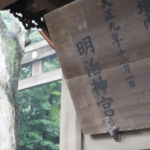
Japan, a country of timeless beauty, historic landmarks, and cultural splendor, offers endless experiences to enchant travelers. A place that effortlessly marries tradition and modernity, Japan’s every corner tells a tale. Amid the many attractions the Land of the Rising Sun has to offer, one shrine stands out – Fushimi Inari Taisha. It’s a place where spirituality, history, and nature merge, creating a surreal and unforgettable experience for all who venture there. Visiting Fushimi Inari Taisha is simply a must!
What is Fushimi Inari Taisha?
Before we delve into the charm of Fushimi Inari Taisha, it is essential to understand what Shinto shrines represent. Shinto shrines are places of worship and are the dwellings of the kami, or Shinto deities.
Shinto, being the indigenous faith of Japan, has an intimate connection with the country’s history and culture. The shrines host festivals, ceremonies, and rites that uphold traditional values and link the past with the present.
Located in Kyoto, Fushimi Inari Taisha is the most vital of several thousands of shrines dedicated to Inari, the Shinto god of rice, agriculture, and business prosperity.
Given Japan’s historically agrarian society, Inari’s significance is deeply woven into the cultural fabric.
The shrine has ancient origins, dating back to 711 AD, predating the establishment of Kyoto as the national capital.
Reasons to Visit Fushimi Inari Taisha
Fushimi Inari Taisha is most recognized for its iconic pathway lined with thousands of vermilion torii gates, often simply referred to as “Senbon Torii,” or a thousand torii gates. This spectacular sight, winding up Mount Inari, forms a tunnel-like canopy that has become a symbol of Kyoto.
Visiting this shrine provides not just a spiritual experience but also a glimpse into the traditions and historical aspects of Japan. Its connection with rice cultivation and business prosperity reflects in the countless torii gates, each donated by an individual or a Japanese business hoping for good fortune.
Another reason to visit is the breathtaking natural beauty that surrounds the shrine. Mount Inari, being a sacred mountain, offers serene hiking trails through dense woodland. A hike to the summit rewards visitors with panoramic views of Kyoto city.
What to Expect When Visting Fushimi Inari Taisha
Upon entering the shrine complex, the Romon Gate, donated by the famous samurai Toyotomi Hideyoshi, welcomes you.
The main shrine, or Honden, stands a short walk from this gate, where visitors come to pay their respects.
One of the main features of Fushimi Inari Taisha is the network of trails behind the main shrine buildings. This is where the torii gate-covered hiking path begins. Each gate, inscribed with the name of its donor, creates a mesmerizing, seemingly endless vermilion corridor leading up the mountain.
Along the way, you will encounter numerous smaller shrines with stacks of miniature torii gates donated by visitors with smaller budgets.
Halfway up the mountain, you will find a resting spot with several tea shops offering respite, refreshments, and a charming view. Remember, the entire climb can take 2-3 hours, so pace yourself!
Throughout the shrine, you’ll also find statues and imagery of foxes. In Shinto belief, foxes are considered messengers and are closely associated with Inari. It’s common for visitors to buy a small fox-shaped ema (wooden wishing plaque) and write their wishes on them.
Location, Getting There, & Admission
Fushimi Inari Taisha is situated in Fushimi Ward in Kyoto, Japan. It is right next to the JR Inari Station. On the JR Nara Line, this is the second station from Kyoto Station (approx. a 5-minute ride). You can also reach it with just a short walk along the Keihan Main Line from Fushimi Inari Station.
One of the many appealing aspects of visiting Fushimi Inari Taisha is that it’s free to enter and is open 24 hours a day, allowing visitors to experience the mystical charm of the shrine at any hour. However, the services at the shrine office are offered from 8:30 to 16:30.
You Simply Must Visit Fushimi Inari Taisha
Fushimi Inari Taisha isn’t just a shrine but a portal to a different realm where you’ll find yourself lost in a blend of spirituality, history, and natural beauty.
Whether it’s the silent whisper of a thousand torii gates, the watchful stone foxes, or the panoramic view of Kyoto city from Mount Inari, visiting Fushimi Inari Taisha creates a beautiful memory and gives a deeper insight into the fascinating culture of Japan.
- Writing & Understanding Haiku Poetry - May 25, 2023
- Shinkansen Bento: A Guide to the Delicious Train Station Box Lunches - May 25, 2023
- What is Takoyaki? - May 25, 2023








